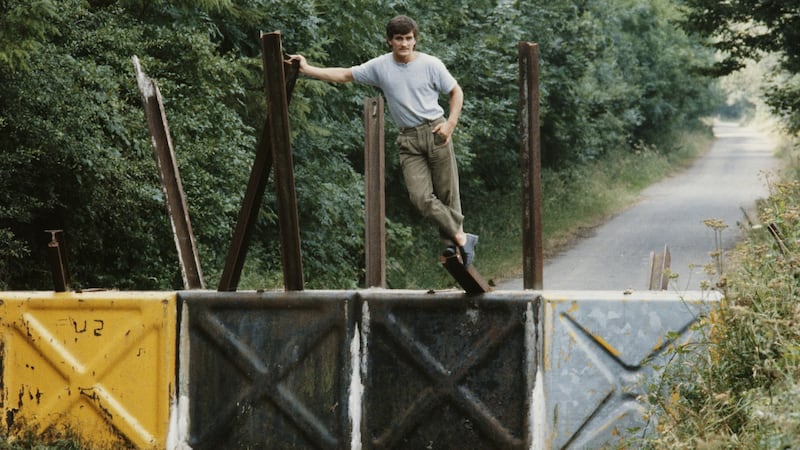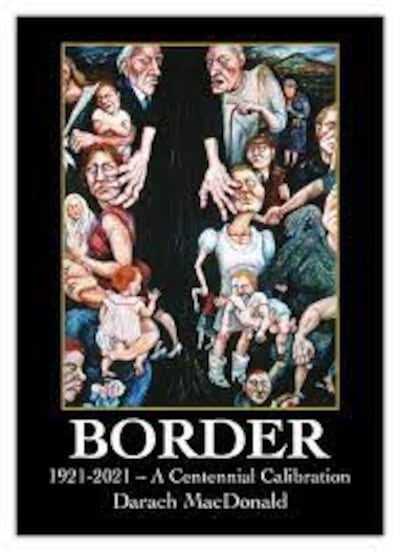It has always been there, a looming presence from my earliest childhood memories in Clones, to this morning’s walk along the Foyle with its backdrop of Inishowen’s hills.
It begins with hazy images of huge crowds of mourners as the tricolour-draped coffins of Sean South and Fergal O’Hanlon are shouldered up Fermanagh Street past our shop/home en route from Enniskillen’s inhospitable morgue to heroes’ funerals in Monaghan town and Limerick.
All my memories from the 1950s and early 1960s are punctuated by similar episodes from within a few miles of home: the Roslea barracks raid in which Connie Green was fatally wounded; barricaded roads impaled with huge steel girders we called “spikes”; my uncle Eugene McCabe building the “escape” route to town he called his Khyber Pass; sporadic checkpoints and patrols of B-Specials emerging suddenly from the dark; sandbag-and-barbed-wire encased police stations in nearby Newtownbutler and Lisnaskea; convoluted customs checks; the shooting dead of local republican Aloysius Hand in a gun battle on the edge of the town; late-night sounds from our shared entry with the pub next door I later learned was a venue for IRA Army Council meetings.
The map of my childhood was a jigsaw frontier of roadblocks, customs posts, small border shops used for casual, small-scale smuggling of household contraband, and those myriad tell-tale signs informing local inhabitants where one jurisdiction ends and another begins. All this was my world long before the era we now call the Troubles even began.
Suddenly I was 16, working at a summer job in Bundoran when the Battle of the Bogside erupted. With new friends from throughout the northern counties, I watched transfixed as it unfolded on TV, a riotous conflagration just over the Border from Donegal. It set the scene for most of my adult life.

I was a student at UCD when paratroopers opened fire on unarmed Derry protesters on Bloody Sunday 50 years ago. I recall the palpable fear and rage that drove me to street protests that ended with the burning of the British Embassy in Dublin. My visits home, meanwhile, too often coincided with car bombs and Border incursions.
Coincidentally, or perhaps not, my MA research in history was on the Irish Boundary Commission of 1924-5 set up under the 1921 Treaty provisions to determine the “wishes of the inhabitants”. There were lots of submissions from the “worthies”, but just a few from those most affected. Those have been the missing voices that have haunted me since.
Through a lengthy career in journalism, my vistas widened and my wisdom deepened in the knowledge that the Border is not a fixed linear frontier with opposing homogenous experiences on either sides. The Border is a complicated labyrinth, not a line. Partition and the temporary border that soon became permanent cannot be conflated to a historical or political issue. There are nuances and stark contrasts.
Lough Foyle is not a carbon copy of Carlingford Lough, no more than the mountainous, sparsely populated borderlands of west Cavan and north Leitrim are similar to the interfaces of Derry city. Or indeed Monaghan, with more than half of the total 210 border crossings into its three neighbouring counties of Tyrone, Armagh and Fermanagh.
Yet every district along that 500km frontier is replete with the unrecorded and often inarticulate memories of those who have teetered on the steep edge of the Border and felt its traumatic effects.
Meanwhile, the Border, in all its guises, has been consigned to the liminal shadows, a threshold of rival polities with a finite perspective for those who direct their centralised administrations from Dublin, Belfast and London. While it is true that the frontier has no linear depth, it is a wide corridor in which identities are blurred, mixed and coagulated among people who work, worship, play and party together.
As elsewhere in Ireland, church dioceses, parishes and congregations straddle county lines regardless of the Border; family and social ties mix and blend; and local shootings, bombings and other atrocities are mourned by close neighbours and remembered together long after they have dropped from wider attention.
For almost 100 years, the Border has been shunted into the sidings of historical and political discourse. It is an awkward subject best forgotten in polite society. Unionism ignores it in hopes that "this we shall maintain"; Nationalism ignores it in hopes that it might simply go away. It has been pushed so far beyond the Pale that when it came to marking Partition during this Decade of Commemorations, we had the bizarre spectacle of a convention of historians, appointed by British prime minister Boris Johnson, determining the date of when the centenary should occur.
Yet the trauma of Partition persists in the lives of those left to negotiate its changing guises down the years. And today, with Brexit and centenary reminders, it looms once more over a wider vista, presenting almost all of the same problems and dilemmas that confronted those hapless boundary commissioners of the 1920s – communities torn apart, corralled into corners, separated from those with whom they most readily identify, normal lives disrupted and made impossible.

My new book, Border 1921-2021: A Centennial Calibration, steps gingerly into this jumbled world to make sense of what has been wrought behind the scenes in a century of stalemate. Through 10 distinct communities that straddle the entire length of the Border, it attempts to tell their stories in verse through a catalogue of annotated historical events that still resonate deeply in their midst.
Boris Johnson's eminent committee notwithstanding, the creation of the Border was not an historical event that can be pinpointed to a particular date. At best, it was a process that continued for years until the Dublin government gave up the contest in December 1925 with the Boundary Commission debacle. At worst, as Brexit has shown, it is a process that continues to this day.
Darach MacDonald's Border 1921-2021: A Centennial Calibration, published by Colmcille Press, will be launched by Eoin McNamee at Cultúrlann Uí Chanáin in Derry on Thursday, January 27th.









